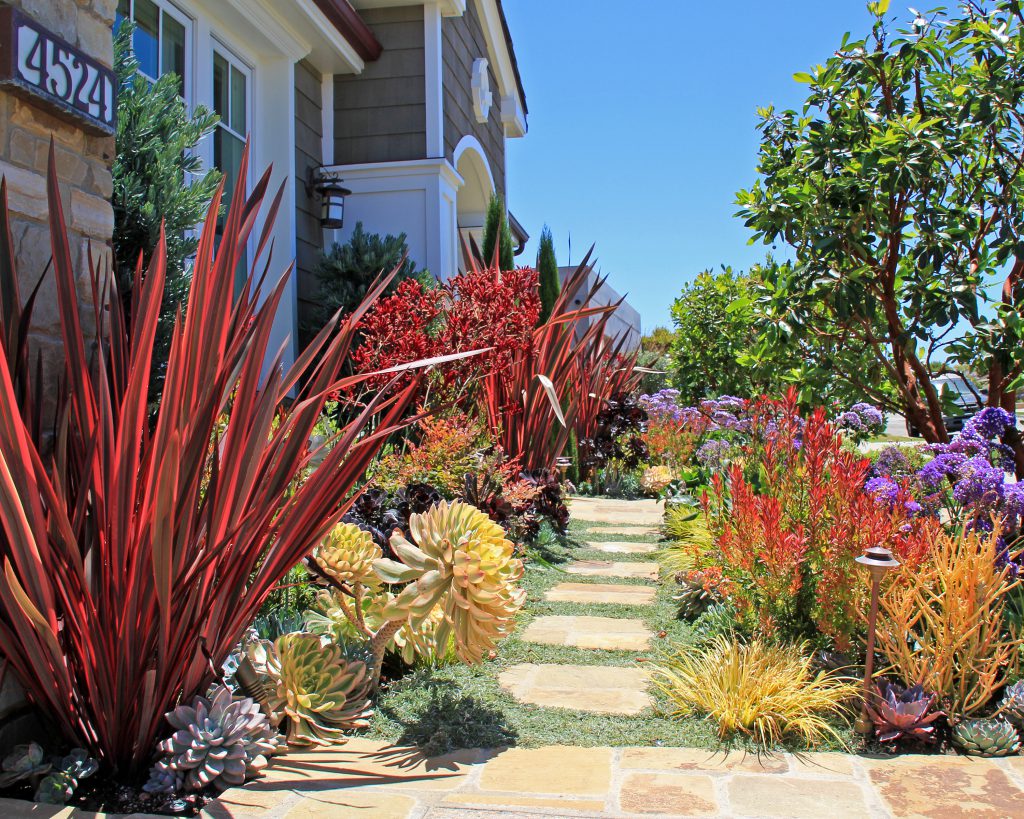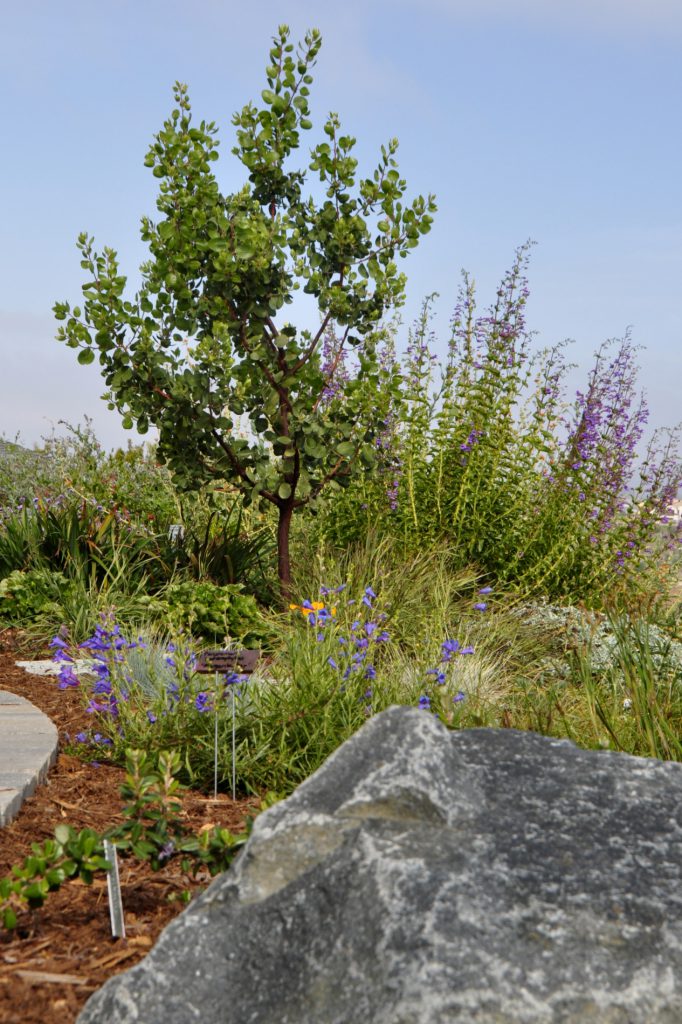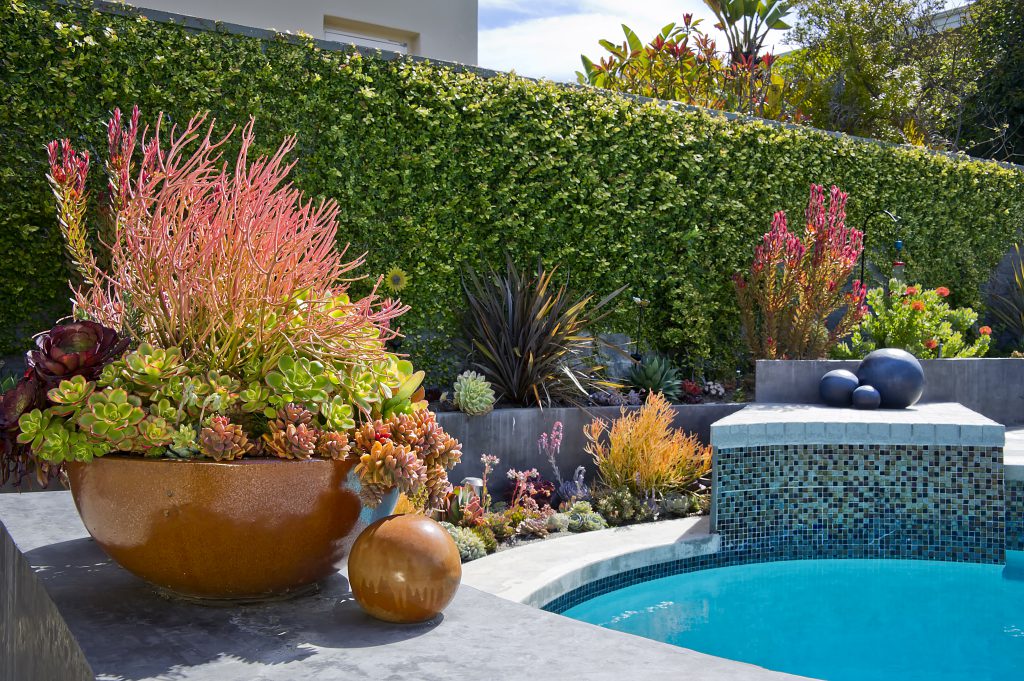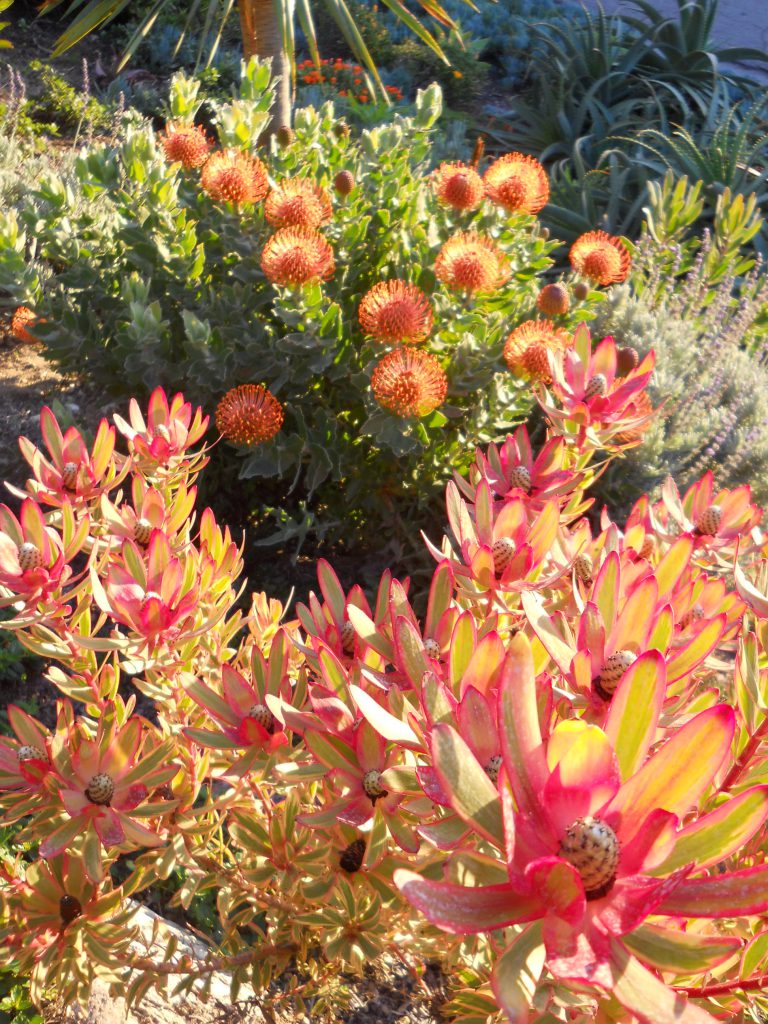
Embrace our state’s natural climate with these sustainable gardening tips.
By Julie Clerk
Let’s face it: We live in a desert and should be treating our yards as such. Besides alleviating the constant struggle of gardening during California’s perpetual drought and other harsh conditions, there are many other benefits to cultivating native plants attuned to the desert around your house.
“They create a sense of place,” says Scott LaFleur, garden director at Sherman Library & Gardens in Corona del Mar. “Creating a landscape that utilizes our native species and showcases them in your yard allows you to feel at home in California.”

Reaping the Rewards
Native plants are already adapted to the climate, soil and specific growing conditions of Newport Beach and elsewhere in Southern California. If you match the right flora to the right place, the plants will be healthier, live longer, grow larger and require fewer resources (water, fertilizer, pesticides, et cetera), LaFleur adds. Native plants are also an important food source for local animals, butterflies and other insects.
The most famous is the connection of the monarch butterfly to our native milkweed explains LaFleur. “Fifteen species of milkweed are native to California,” he says. “These drought-tolerant plants play a critical role in supporting a tremendous range of, not only monarch butterflies, but a wide range of pollinators. However, don’t forget about our native bees, which are equally—if not more—important than non-native managed honey bees. The native bees work hard and cover a lot of ground and a lot of species.”
If that isn’t enough to make you think about planting native species, LaFleur says that doing so also affords the opportunity of minimizing your carbon footprint. That’s because most native plants are grown locally, rather than shipped from far away. For example, native plants are sold by the Environmental Nature Center in Newport among other organizations in the region.

Choosing the Right Plants
According to the Theodore Payne Foundation for Wild Flowers & Native Plants, a nonprofit nursery based in Sun Valley (north of Hollywood) specializing in California flora, the easiest native plants to grow for coastal or inland gardens include the California bush sunflower; Howard McMinn manzanita with its white, urn-shaped blossoms; and black sage, with white to pale blue flowers. Inland, other options include the blue Ray Hartman California lilac; toyon; and white sage, a favorite of bumblebees and birds.
The choice of plants very much depends on yard design. But there are steps you can take to ensure the garden works for you rather than the other way around.
“First, sit down and talk about what it is you want out of your landscape,” says Ron Vanderhoff, general manager and vice president of Roger’s Gardens, who adds that, realistically, this step might take a few sessions before everyone agrees. “Then, be honest about the amount of time, effort and money you or your family want to invest in the garden’s ongoing maintenance.”
Among the questions that Vanderhoff says you should ask yourself (and be brutally honest about) are: “Do you want a really flowery, colorful garden, but don’t like spending a lot on maintenance and replanting?”
Finally, Vanderhoff says that all parties should agree upon a general theme for the garden and stick with it. “A garden with a comprehensive theme throughout is extremely pleasant to look at and [these] are almost always the best gardens in the neighborhood. Whether the theme is Mediterranean, tropical, succulent, modern/contemporary, California native, birds and butterflies or anything else, stay true to it,” Vanderhoff says.
He also emphasizes the importance of high-quality professional help. Weeds can be largely avoided by following good advice early on. Shrubs and trees that need to be continually clipped and pruned are the result of poor planning and bad plant selection at the outset. Plants that are dying from being over-watered or under-watered are the result of not matching the irrigation and neighboring plants to the planting locations. Continual insect problems and leaf diseases can be avoided by choosing different plants or locating them in different places around the yard.
These and dozens of other expensive frustrations can be avoided with help from an expert horticulturist who has your best interests in mind. You’ll never get everything perfect, but you will avoid a lot of expensive and aggravating mistakes, Vanderhoff adds.

Water-Wise Options
“Gardeners now almost completely acknowledge that their plant selections and their gardens need to conserve water, endure periods of drought and be appropriate for our summer-dry/winter-wet Mediterranean climate,” Vanderhoff says.
That said, water conservation is not achieved through plant selection alone, he says. Conserving water is a much more comprehensive issue that involves at least some significant changes to irrigation regimens and even timers and equipment.
“Pulling out thirsty plants and replacing them with low-water plants is a somewhat simplistic and usually flawed approach to water conservation. I wish it was that simple,” Vanderhoff explains.
A water-conserving landscape also requires a different approach regarding how plants are grouped in a garden and where those groups are located relative to the irrigation. This concept is called hydrozoning and involves making plant selections and assembling them into individualized irrigation areas, based upon their needs for frequency of irrigation, light requirements, growing seasons and other factors.
While these elements must be considered, at the end of the day, it’s your garden.
“I feel a garden should reflect the people that inhabit it,” LaFleur says. “From formal to free flowing, you have to live in and with your garden, so it should make you happy whenever you visit it. All styles can be achieved with native plants or a high percentage of native plants.”
LaFleur believes there’s nothing wrong with adding a few noninvasive climate-appropriate plants. “My opinion is that you can achieve a water-wise garden using any style of garden if you choose appropriate plants. It doesn’t need to look like a garden from Phoenix unless you want it to.”




